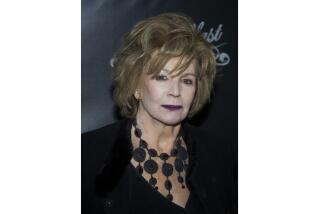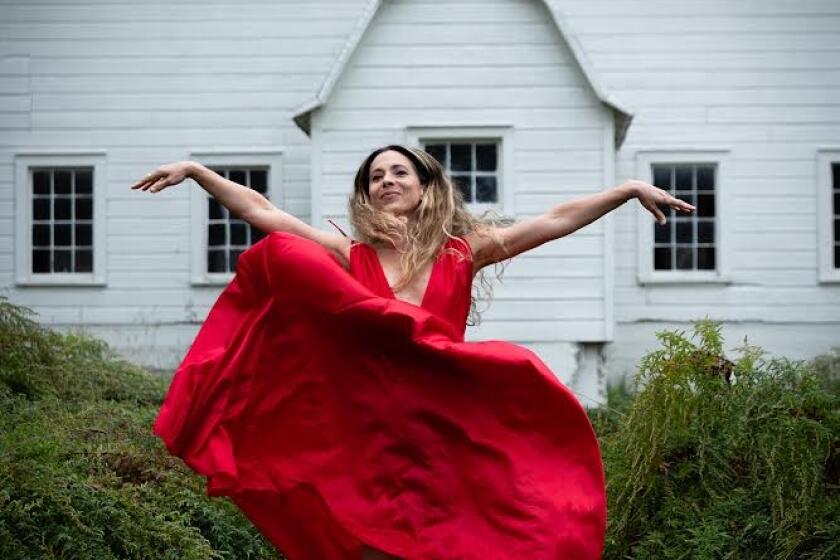Four writers forged by their Catholic faith
“I write the way I do because and only because I am a Catholic,” Flannery O’Connor informed a friend. “I feel that if I were not a Catholic, I would have no reason to write, no reason to see, no reason ever to feel horrified or even to enjoy anything.” The certainty of that admission still surprises, as religion remains a source of disquiet in American literary culture. Even though many of our greatest stories and poems ripple with faith-based tribulations as powerful as the sea swallowing the Pequod, critics and readers shy away from discussing the frankly religious temper of so many of our writers. (Who refers to Toni Morrison as a Catholic novelist?)
Yet not long ago American thought and letters were enriched by Roman Catholic writers emboldened by their faith to address the skepticism and uncertainty abundant in the wider culture. “The Life You Save May Be Your Own” tells the story of four of them. Its author, Paul Elie, wasn’t the first to link these writers -- Caroline Gordon, a confidant of each, named them “the School of the Holy Ghost” nearly half a century ago -- but he has accomplished the synthesis and illumination that Gordon sensed would be essential someday. Throughout his study, the lives of these four, who read and corresponded with one another but seldom (if ever) met, unexpectedly harmonize, like the parts in a grand piece of sacred polyphonic music -- a remarkable confluence, considering how singular their lives were.
Dorothy Day (1897-1980) began as a political radical and journalist; renewed by religion, she set a course for Christian activism that has yet to falter. After co-founding the Catholic Worker in New York City in 1933, Day spent the rest of her life taking in and praying for and with the poor. She also wrote and agitated for peace, economic justice and civil rights, earning devotion and calls for her canonization. If the Vatican can figure out how to forgive Day’s politics, her several love affairs and an abortion (it will be interesting to learn which of the three they find least scandalous), we may yet see a Saint Dorothy Day.
Thomas Merton (1915-1968) was so transfigured by his conversion to Catholicism that he abandoned his ambitions of living a full life as an important writer in New York to enter a Trappist monastery, discovering a transformed vocation as a writer -- a vocation expressed most powerfully in his 1948 book “The Seven Storey Mountain.” This hugely popular autobiography launched Merton as, first, a popular religious author and later (and more enduringly) as an anatomist of the role of religious belief in postwar America and a diarist of his soul’s own struggles with discipline, faith and desire.
Walker Percy (1916-1990) struggled with his formidable Southern family history and dual careers as doctor and writer. Although not as dramatic a struggle as Day’s or as moving as Merton’s, it was nonetheless a hard-fought and ultimately successful one, resulting in a series of major works initiated by “The Moviegoer.” He outlived the other three, coming to a deeper appreciation of the importance of his religious beliefs at the end of his life.
And Flannery O’Connor (1925-1964), the only one of the four born a Catholic -- a Georgia Catholic, no less -- was fiercely tested by her region’s fundamentalism, by the fervent visions she singularized into fiction and by lupus, a degenerative disease that forced her to live a nearly cloistered existence until her early death.
“The Life You Save May Be Your Own” renders these life studies as religious narratives -- pilgrimage narratives. As the author explains, “A pilgrimage is a journey undertaken in the light of a story. A great event has happened; the pilgrim hears the reports and goes in search of the evidence, aspiring to be an eyewitness.” Elie weaves their journeys into a tapestry of American Catholicism’s incursion into secular life and art. His is a labor of devotion as well as examination, part apologia, part apotheosis. It succeeds because of Elie’s skills as a writer and because he is addressing the right subject at the right time. He was born in 1965, just as the Second Vatican Council concluded, and he grew up as its challenges to centuries of Catholic conservatism were tested and then retreated from. Within reach of but unscarred by the religious and social conflicts his subjects endured, Elie can explain “old” Catholic American life with little rancor and welcome detachment. He understands the central issue of his subjects’ pilgrimage: how to believe in God in a culture often determined to prove that God does not and never did exist (“I believe in a new kind of jesus,” preaches Hazel Motes in O’Connor’s novel “Wise Blood,” “one that can’t waste his blood redeeming people with it, because he’s all man and ain’t got any God in him”), and how to wrestle this conflict to insight through words. His book is clearly the introductory title of choice for readers and students.
Elie’s achievement does have its limits. He relies almost completely on efforts by previous biographers and scholars. This is not surprising -- starting from scratch on any of these authors would require many years’ work -- but still it is disappointing: There is only so much insight one can glean from others’ evidence. In addition, Elie, a critic of merit, is less sure as a storyteller. Argument inspires him; biographical narrative often does not. “She wanted him the moment she laid eyes on him,” he writes of the man Dorothy Day became pregnant by, and in such blunt lines Elie seems almost embarrassed by his subject’s humanity.
O’Connor is the greatest of the authors under discussion and without doubt the biggest draw for potential readers. While biographical information is readily available on Day, Merton and Percy, no authoritative life of O’Connor yet exists. Her work is still making its way to us: Not long ago, Lorine M. Getz collected her little-known, valuable book reviews in “Flannery O’Connor, Literary Theologian.” Sometimes patronized as a Southern Gothic grotesque, O’Connor is also increasingly identified as a religious writer of distinction, and “Flannery O’Connor: Spiritual Writings,” a new and outstanding selection from her canon, is essential O’Connor reading. (Robert Ellsberg, its editor, became a Catholic after first looking into O’Connor’s correspondence.) Elie clearly adores her writing and is moved by her difficult life. Yet he never fully addresses the central issue surrounding this author: the truly perilous gravity of her work.
“My subject in fiction,” she once explained, “is the action of grace in territory held largely by the devil. I have also found that what I write is read by an audience which puts little stock either in grace or the devil.” At a time when “serious” fiction was increasingly urban and secular, O’Connor’s stories of the rural, poor Protestant South were often disparaged as ridiculous or incredible. But keeping to “her true country,” as she put it, this author got down as no other the conflagration that occurs as grace combusts amid evil. “All human nature vigorously resists grace because grace changes us and the change is painful,” she wrote in 1958. (Adding, “Priests resist it as well as others.”) Her illuminations do not follow traditional models of tortured saints and wondrous miracles; rather, grace intervenes in the sufferings of the ordinary -- ignorant, complacent people whose pieties, prejudices and illusions are burned away by a pitiless and savage grace, a “purifying terror
Like many O’Connor admirers, Elie seems to prefer her less confrontational work -- the fiction least Poe-like in its horrific splendor. (O’Connor cited Poe as “an influence I would rather not think about.”) Elie offers a moving discussion of “Revelation,”a story that is something of a relief in this author’s repertoire: It’s extremely funny, nobody dies in it, and its visionary finale of souls “climbing upward into the starry field and shouting hallelujah” is exalting rather than rending.
Yet O’Connor’s art is truest when it is ruthless and unsparing toward modern-day, post-religious beliefs. Her satirical “Wise Blood” is easily appreciated. Her second novel, the almost absurdly relentless “The Violent Bear It Away,” is harder to admire but considerably braver, yet Elie hesitates before this work and O’Connor’s demonstrations of grace at its most appalling. (He even gets the scriptural citation behind the novel’s title wrong: It’s Matthew 11, not Luke 10.) In this world desperate to escape redemption, prophecy leads to tragedy, baptism to death and revelation not to hallelujahs but divine threats of “THE TERRIBLE SPEED OF MERCY.” It is inexcusable -- a religious vision purged of comfort, yet anyone reading O’Connor must wrestle with it.
Though she died earlier than most of her fellow fiction writers, it’s beginning to seem as if O’Connor’s words might outlive theirs, as Day’s radical charity and Merton’s solitary candor will. (Percy’s reputation as a fiction writer is also appearing increasingly secure.) However one might quarrel with Elie’s insights or enthusiasms, his work, too, is a pilgrimage through four lives transfigured by faith and creativity, a passage through fire and grace that all writers of substance (and at least some of their readers) must accept and endure.
More to Read
Sign up for our Book Club newsletter
Get the latest news, events and more from the Los Angeles Times Book Club, and help us get L.A. reading and talking.
You may occasionally receive promotional content from the Los Angeles Times.








